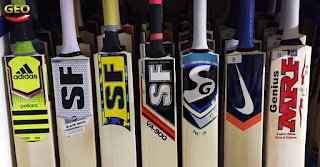About Cricket Ball
The Cricket ball is a basic requirement for any game
of Cricket to happen. A Cricket ball is made of cork and latex and is covered
by leather. This leather is held together by stitching which is called the
“Seam”. The ball, when new, shall not weigh less than 5½ ounces/155.9 grams,
nor more than 5¾ ounces/163 grams (156 grams is Optimum), and shall measure not
less than 813/16 inches/22.4 cms, nor more than 9 inches/22.9 cms in
circumference.
Based on format of the game, Cricket balls are made of different colors these days i.e.
Red, White, and Pink etc. In Test and First class Cricket matches, Red ball is
being used. In One day limited overs matches and T-20 Matches (Day/ Night
Matches) a White ball is being used. Recently ICC (International Cricket
Council) has allowed the Pink Ball to be used in Day/ Night Test Matches. The
shape and dimensions are the same for Red, White & Pink balls. The seam
that runs around its circumference can make the ball bounce away and towards
the batsman once it hits the wicket.
All balls to be
used in the matches are being approved by the umpires and captains, Balls shall
be in the possession of the umpires before the toss and shall remain under
their control throughout the match. The umpire shall take possession of the
ball in use at the fall of each wicket, at the start of any interval and at any
interruption of play.
Unless an agreement to the contrary has been made
before the match, either captain may demand a new ball at the start of each
innings. In a match of more than one day’s duration, the captain of the
fielding side may demand a new ball after the prescribed number of overs has
been bowled with the old one. Number of overs shall not be less than 80 overs.
The umpire shall inform the other umpire and indicate to the batsmen and the
scorers whenever a new ball is taken into play.
If, during play, the Cricket ball cannot
be found or recovered or the umpires agree that it has become unfit for play
through normal use, the umpires shall replace it with a ball which has had wear
comparable with that which the previous ball had received before the need for
its replacement. When the ball is replaced the umpire shall inform the batsmen
and the fielding captain.



Comments
Post a Comment